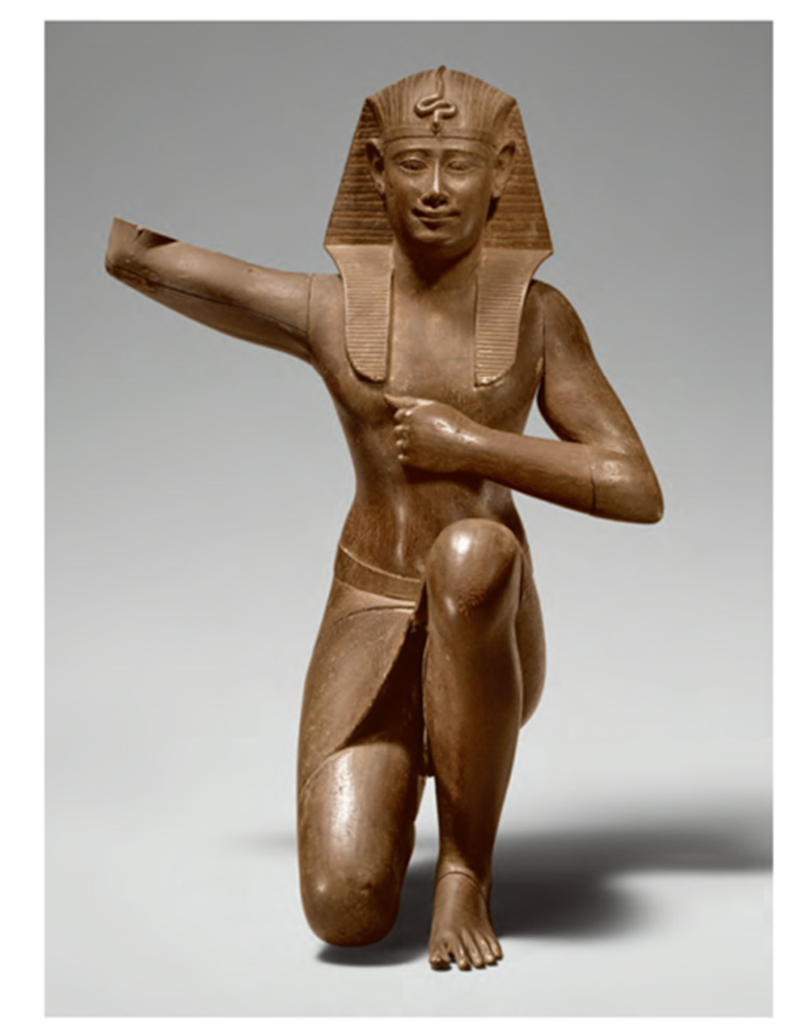
Artifact Name: Kneeling Statue of a Pharaoh
Origin: Egypt
Period: Early Dynastic Period, ca. 3100-2686 B.C.
Material: Red granite
Dimensions: H. 14 1/4 in. (36.2 cm)
Current Location: The Metropolitan Museum of Art, New York, USA
Background Information:
This red granite statue represents a pharaoh from the Early Dynastic Period of ancient Egypt, a time when the unification of Upper and Lower Egypt solidified the power and divine status of the king. The figure is depicted in a kneeling position, a pose that typically signifies an offering or a gesture of respect. The pharaoh’s right arm is extended outward, possibly presenting an offering or asserting his rule.
The statue’s headdress, known as the nemes, is a distinctive feature, adorned with the cobra emblem, which symbolizes royalty and divinity. The facial features are stylized, with a serene expression that conveys a sense of calm authority. The figure’s left hand rests on the knee, while the right hand is open and extended, a gesture that could be interpreted as either giving or receiving.
The use of red granite for the statue is significant, as it was often chosen for its durability and the belief that it resembled the skin of the gods. This choice of material, along with the statue’s pose and iconography, would have emphasized the pharaoh’s divine nature and eternal power.
The statue’s current location in The Metropolitan Museum of Art allows for public access and scholarly study, providing insights into the cultural and artistic heritage of ancient Egypt during its formative years. The artifact serves as a historical record of the artistic styles, cultural practices, and societal values of the time and place it represents.
